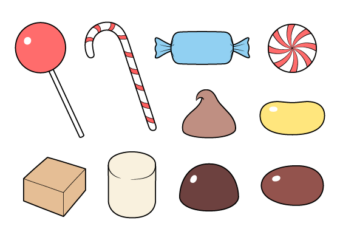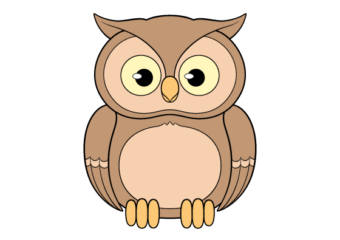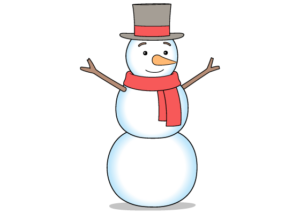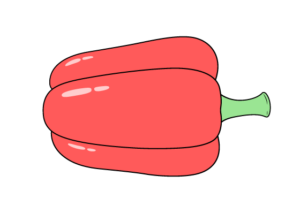How to Draw Scissors (6 Step Tutorial)
This tutorial shows how to draw a pair of scissors in six easy to follow steps. It features illustrated examples and quick and simple instructions.
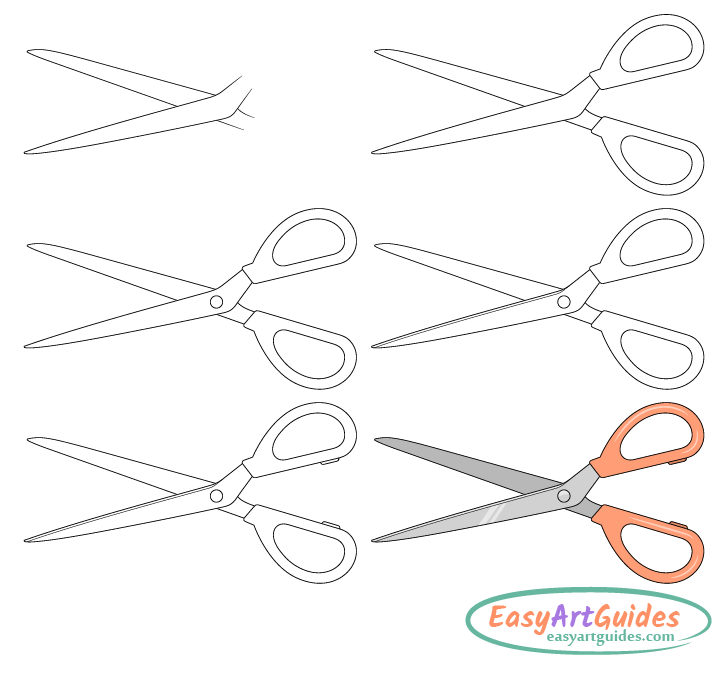
The scissors shown as the example in this guide are drawn with a fair common design that is very characteristic of such a cutting tool. To keep the tutorial beginner friendly the drawing is also slightly stylized/simplified. You can see a preview of it’s key stages in the example above but there are also a few additional examples provided in some of the steps (including these same scissors when they are closed).
It’s recommended that you start the tutorial in pencil and make light and easy to erase lines to make it easy to correct any potential mistakes. You can darken them before once you have all parts of the scissors outlined.
In addition to the line drawing this guide also show an easy but effective way to color and shade the drawing. This is done in a way where it both helps give the scissors a more three dimensional appearance and helps convey what materials they are made of.
Step 1 – Draw the Blades of the Scissors
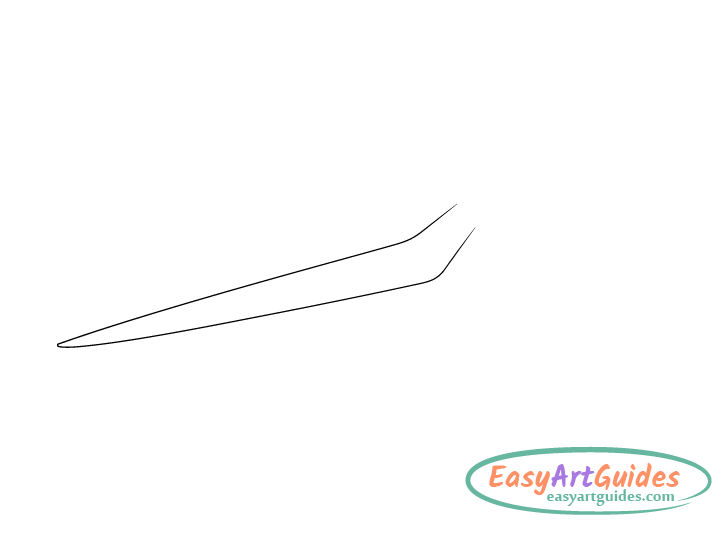
Begin the drawing by outlining the blades of the scissors starting with the one in the front. This will be connected to the upper bow (handle).
Make the blade wider as it goes from the tip towards the base with upwards bend near it’s end. Past the bend draw the blade getting narrower as it goes up.
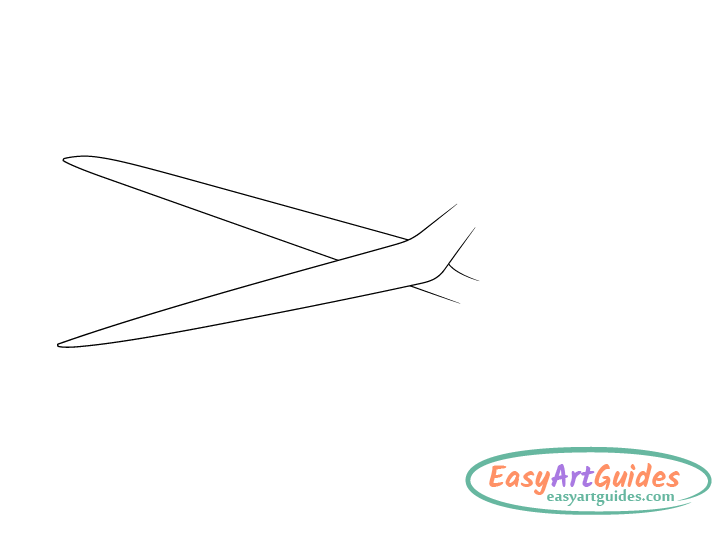
Draw the second blade (the one in the back) slightly wider near the tip as compared to the first one. Also draw it without a bend at it’s base but instead make it a little narrower as it goes past the pivot point.
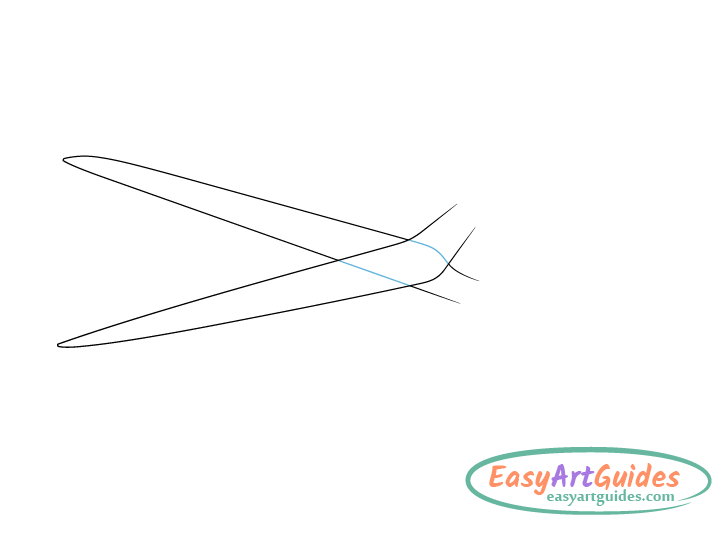
When drawing the second blade you may wish to outline it’s entire shape as though the first one is see through (as shown above). You can then erase the part of it that should be hidden.
Drawing in such a way can help you avoid mistakes such as having the two sections separated by the front blade misaligned.
Step 2 – Draw the Bows (Handles/Finger Holes)
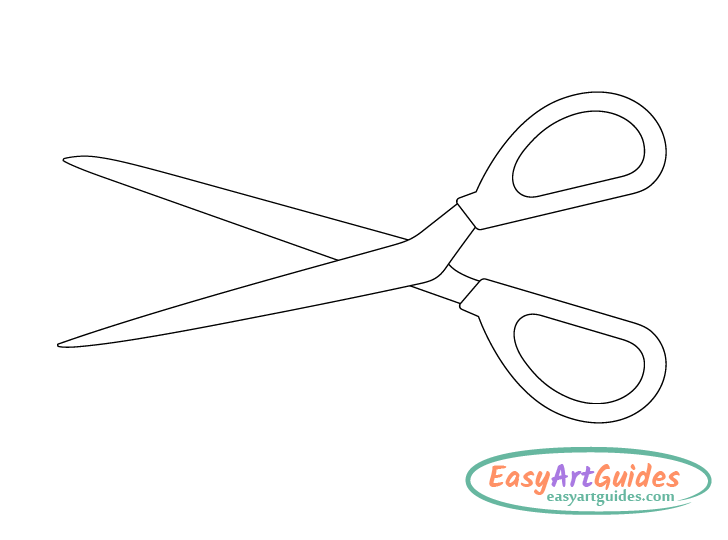
At the ends of each of the blades draw the bows (the handles/finger holes of the scissors). These should both have the same shapes that mirror one another.
Start by drawing the outer shape of each bow and then add the finger holes inside them.
Step 3 – Draw the Pivot Screw

For this very easy step draw the screw that holds the scissors together and that they pivot around. Simple define it’s shape as a little circle (placed where the two blades overlap).
Step 4 – Draw the Edge of the Blade
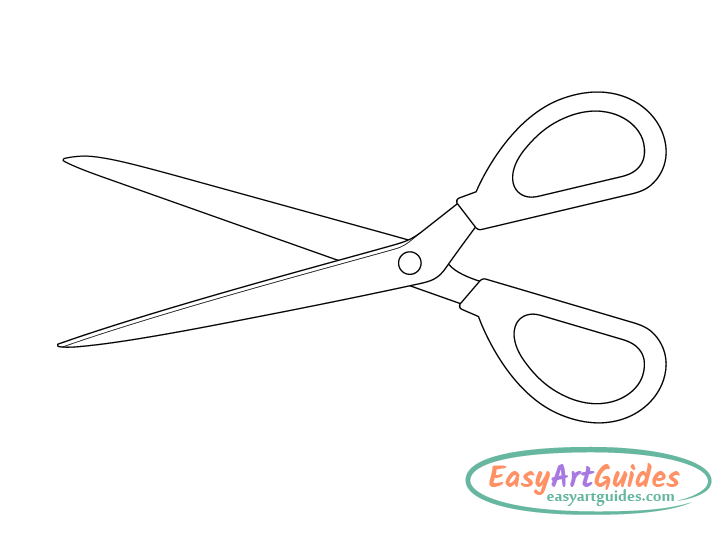
Define the edge of the front blade with a line that runs along it’s upper edge. You don’t need to define the blade of the back edge as in this case it’s facing away form the viewer and will not be visible.
Step 5 – Draw the Bumpers on the Bows/Handles
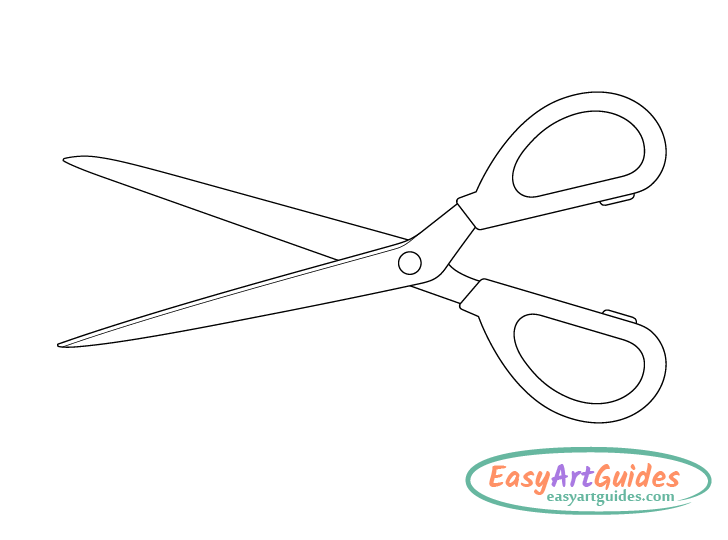
For the last parts of the line drawing add the bumpers on the inner side of each of the bows (the parts that come together when the scissors are closed).
Once done with this last pair of details trace over your drawing with darker pencil lines or a thin black marker. Just be sure you are happy with how the shapes and placement of the different parts before doing so.
Step 6 – Color the Scissors Drawing
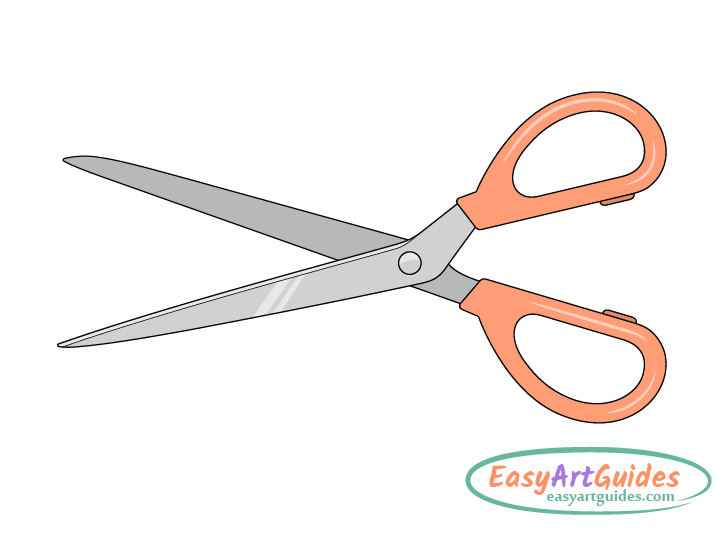
Finish the drawing by adding some color and shading. Start by making the the blades grey to show that they are metallic. An easy way to do this is by simply using a regular pencil. Make the front blade slightly lighter and the back one slightly darker (by pressing harder on the pencil). Also, leave a few white streaks along the front blade for reflections to help give the metal a shiny look. You can then very lightly go over them with grey as well so that they don’t look overly bright.
In this example the handles/bows are orange but you can make them any color you like.
When coloring the bows also leave a few light strips running along each of them (as shown in the example). Similar to the reflections along the blade these will also help make the handles look shiny (like smooth plastic). Again, similar to the blade you can first leave these white and then lightly go over them with whatever color you choose to make the bows. Afterwards, slightly darken the bumpers by going over top of the color with a regular pencil.

Above is the same pair of scissors draw in their closed state. If you would like to draw them in such a way you can still use all of the same steps used for drawing this pair in it’s open state. Simply change the position of the different parts as shown.
Conclusion
Drawing simple objects like the scissors shown in this tutorial can be a great way to improve as a beginner artist.
In this example the scissors have a very common and uncomplicated design but at the same time also one that is characteristic of such a tool. This means that if done properly the drawing should generally be fairly easily recognizable for what it’s supposed to be.
By giving the scissors some very basic shading you can also help make them appear more three dimensional and give a hint of what kind of materials they are made of.
Hopefully you’ve found the detailed examples and provided in this guide helpful. For more similar drawing tutorials also see:

